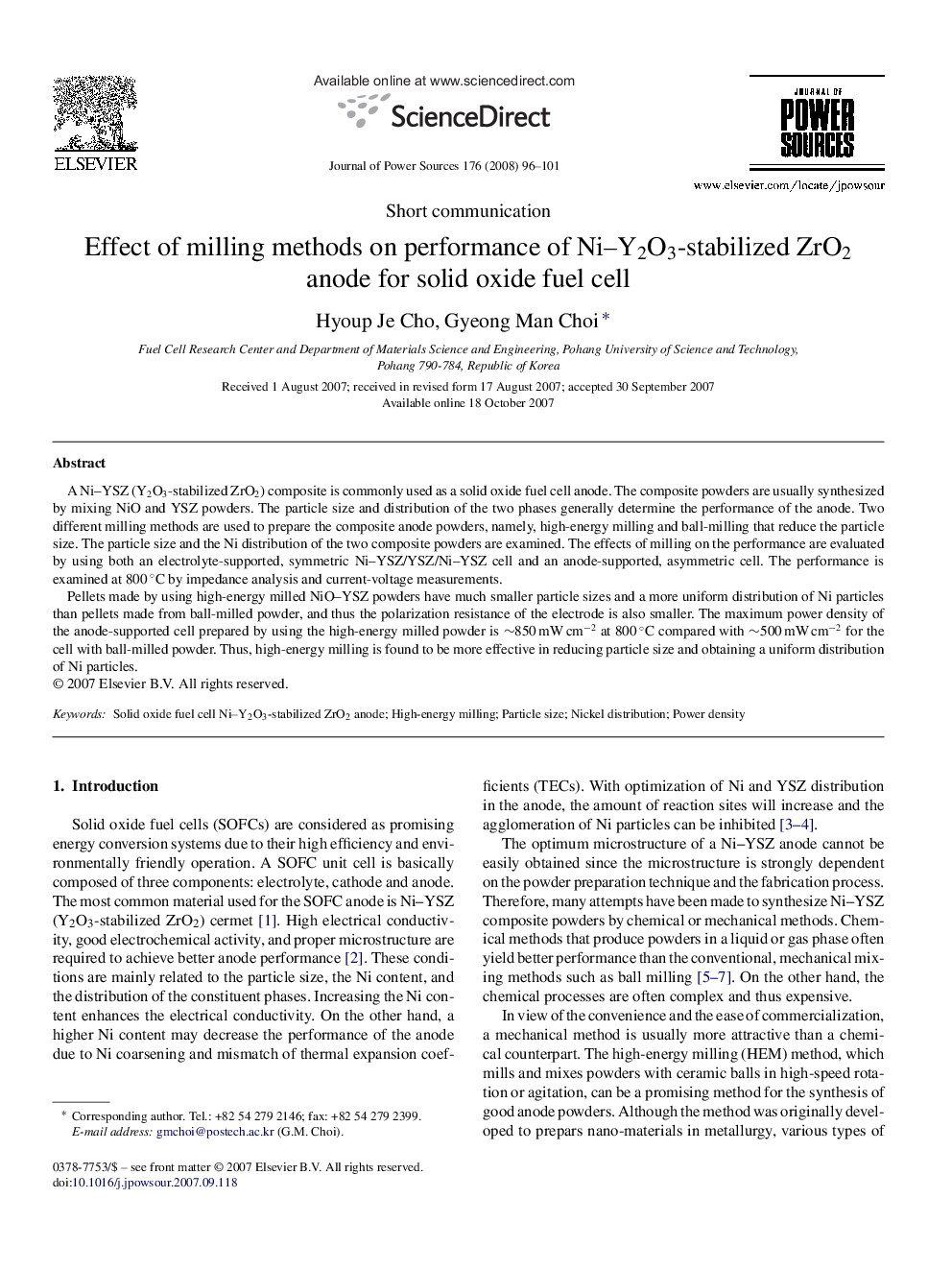| کد مقاله | کد نشریه | سال انتشار | مقاله انگلیسی | نسخه تمام متن |
|---|---|---|---|---|
| 1285871 | 973164 | 2008 | 6 صفحه PDF | دانلود رایگان |

A Ni–YSZ (Y2O3-stabilized ZrO2) composite is commonly used as a solid oxide fuel cell anode. The composite powders are usually synthesized by mixing NiO and YSZ powders. The particle size and distribution of the two phases generally determine the performance of the anode. Two different milling methods are used to prepare the composite anode powders, namely, high-energy milling and ball-milling that reduce the particle size. The particle size and the Ni distribution of the two composite powders are examined. The effects of milling on the performance are evaluated by using both an electrolyte-supported, symmetric Ni–YSZ/YSZ/Ni–YSZ cell and an anode-supported, asymmetric cell. The performance is examined at 800 °C by impedance analysis and current-voltage measurements.Pellets made by using high-energy milled NiO–YSZ powders have much smaller particle sizes and a more uniform distribution of Ni particles than pellets made from ball-milled powder, and thus the polarization resistance of the electrode is also smaller. The maximum power density of the anode-supported cell prepared by using the high-energy milled powder is ∼850 mW cm−2 at 800 °C compared with ∼500 mW cm−2 for the cell with ball-milled powder. Thus, high-energy milling is found to be more effective in reducing particle size and obtaining a uniform distribution of Ni particles.
Journal: Journal of Power Sources - Volume 176, Issue 1, 21 January 2008, Pages 96–101